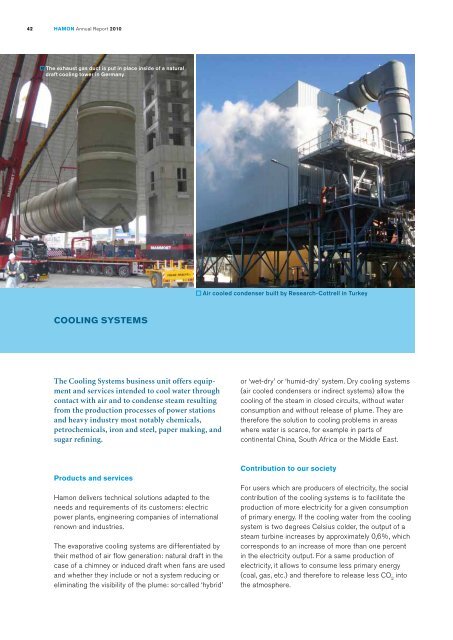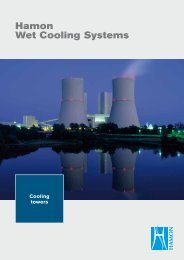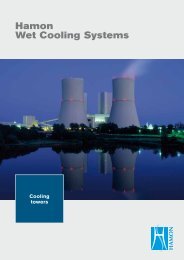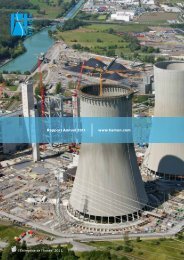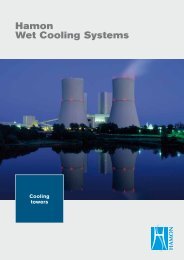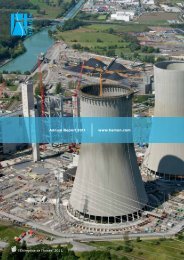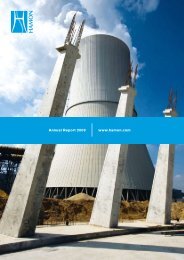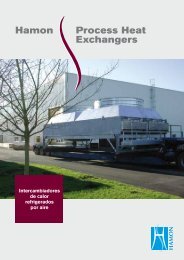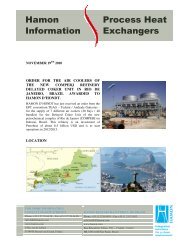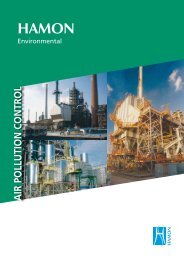Download PDF version English(2664KB) - Hamon
Download PDF version English(2664KB) - Hamon
Download PDF version English(2664KB) - Hamon
Create successful ePaper yourself
Turn your PDF publications into a flip-book with our unique Google optimized e-Paper software.
42<br />
<strong>Hamon</strong> Annual Report 2010<br />
The exhaust gas duct is put in place inside of a natural<br />
draft cooling tower in Germany<br />
Air cooled condenser built by Research-Cottrell in Turkey<br />
Cooling Systems<br />
The Cooling Systems business unit offers equipment<br />
and services intended to cool water through<br />
contact with air and to condense steam resulting<br />
from the production processes of power stations<br />
and heavy industry most notably chemicals,<br />
petrochemicals, iron and steel, paper making, and<br />
sugar refining.<br />
or ‘wet-dry’ or ‘humid-dry’ system. Dry cooling systems<br />
(air cooled condensers or indirect systems) allow the<br />
cooling of the steam in closed circuits, without water<br />
consumption and without release of plume. They are<br />
therefore the solution to cooling problems in areas<br />
where water is scarce, for example in parts of<br />
continental China, South Africa or the Middle East.<br />
Products and services<br />
<strong>Hamon</strong> delivers technical solutions adapted to the<br />
needs and requirements of its customers: electric<br />
power plants, engineering companies of international<br />
renown and industries.<br />
The evaporative cooling systems are differentiated by<br />
their method of air flow generation: natural draft in the<br />
case of a chimney or induced draft when fans are used<br />
and whether they include or not a system reducing or<br />
eliminating the visibility of the plume: so-called ‘hybrid’<br />
Contribution to our society<br />
For users which are producers of electricity, the social<br />
contribution of the cooling systems is to facilitate the<br />
production of more electricity for a given consumption<br />
of primary energy. If the cooling water from the cooling<br />
system is two degrees Celsius colder, the output of a<br />
steam turbine increases by approximately 0,6%, which<br />
corresponds to an increase of more than one percent<br />
in the electricity output. For a same production of<br />
electricity, it allows to consume less primary energy<br />
(coal, gas, etc.) and therefore to release less CO 2<br />
into<br />
the atmosphere.


